Gluten Free All Purpose Flour (that’s never gritty!)
Tired of grinding pasty, gritty gluten free baked goods around in your mouth? I know you’ve been wondering if there’s something better out there and guess what? There is. Get this gluten free all purpose flour blend on hand and your baking world will change, I promise. Never gritty, and generally inexpensive in the world of costly gluten free flour blends, this one is a winner!
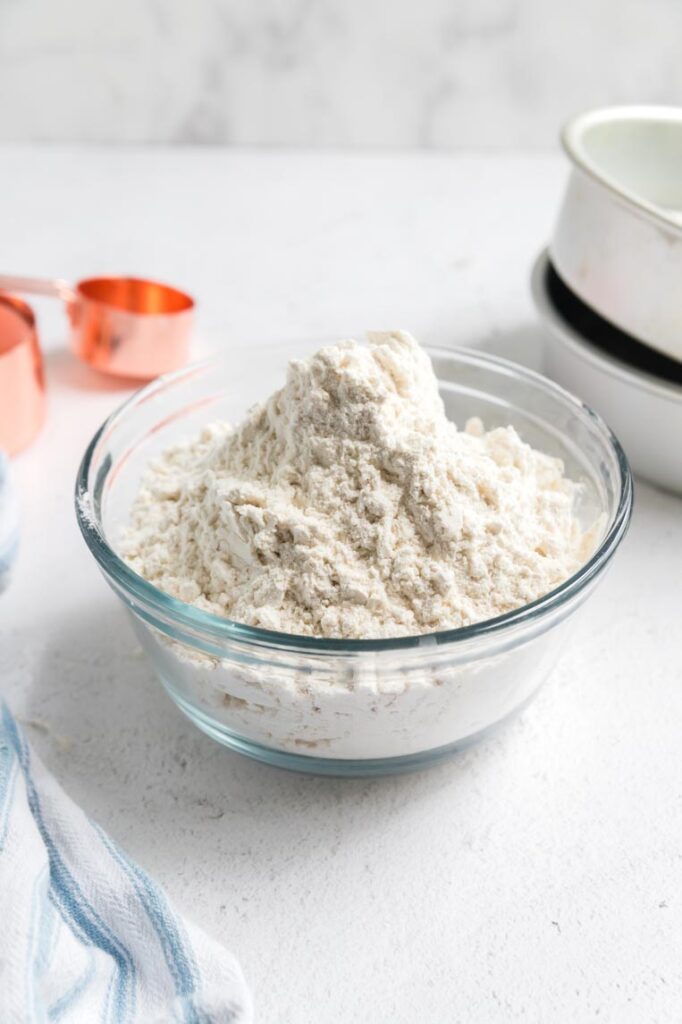
When you start a gluten free diet, you do what I did: Ravage that one aisle in the grocery store–sure you’re never really going to be able to eat like a normal person ever again. You grab anything that says “GLUTEN FREE” on it.
You get all the goods. The cookies, the pancake mix, the pasta. (Okay, I’ll admit some of the pasta is delicious.)
Then you go check out and realize that the bill is exactly 2 million dollars and that pack of pancake mix cost as much as your kid’s back to school clothes. And you’re shocked.
Then you grab a cookie in the car on the way home to soothe your sadness and it’s all kind of gritty and odd. The shock and disappointments just keep coming but you try to press through it.
I’ve been there too, can you tell?
And I know how it feels to crave that texture that gluten provides in some foods. But let me give you a big old boost of confidence because I’ve discovered an all purpose gluten free flour blend that delivers all the good things you need with none of that grit that makes you remember you’re eating gluten free.
Be satisfied. Be comforted. Be fulfilled, and still stick to your diet.
We’ll make it the 8th wonder of the world.
How to use a gluten free all purpose flour blend
Unfortunately, the amounts of regular wheat flour and gluten free flours can’t be swapped equally with reliable results. People do it, sure, but what comes out is sometimes a little sad. When you work with gluten free flours, you often have to adjust the amount of liquids in the recipe.
And with so many gluten free blends on the market (I’ve made some that had 10 ingredients!), there’s only one thing I can say for certain: you’ll get a different result with all of them.
This particular blend has been very reliable for me and I’ve used it in some of my favorite traditional recipes with great success.
What flours are in homemade gluten free all purpose flour?
In this case, there are three ingredients. And even though I never do this, I’m telling you that there’s one ingredient you have to have–no swapping in some junky gritty rice flour. That’s Authentic Foods Superfine Brown Rice Flour.

About $14 for a 3 pound bag, you’ll be able to mix several batches of flour with it and make enough cakes, biscuits and bread to leave you in a carb coma. You’ll get your money’s worth out of it.
The other ingredients are potato starch and tapioca flour which you don’t necessarily need to order. You should be able to find those in a health food store or in the gluten free aisle of your local grocery store. They are more affordable than the rice flour.
Then it’s just a matter of measuring and mixing them together and storing the concoction in an airtight container. Store your leftover gluten free all purpose flour ingredients in your freezer so they’ll be fresh when you want to mix another batch.
How do I make self rising gluten free all purpose flour?
To make your gluten free all purpose flour self rising, you’ll need to add leavening agents like baking soda, baking powder and salt. I don’t recommend adding those to your main flour. Instead, add them as directed in the recipe you’re making. If you need leavening agents, the recipe will tell you.
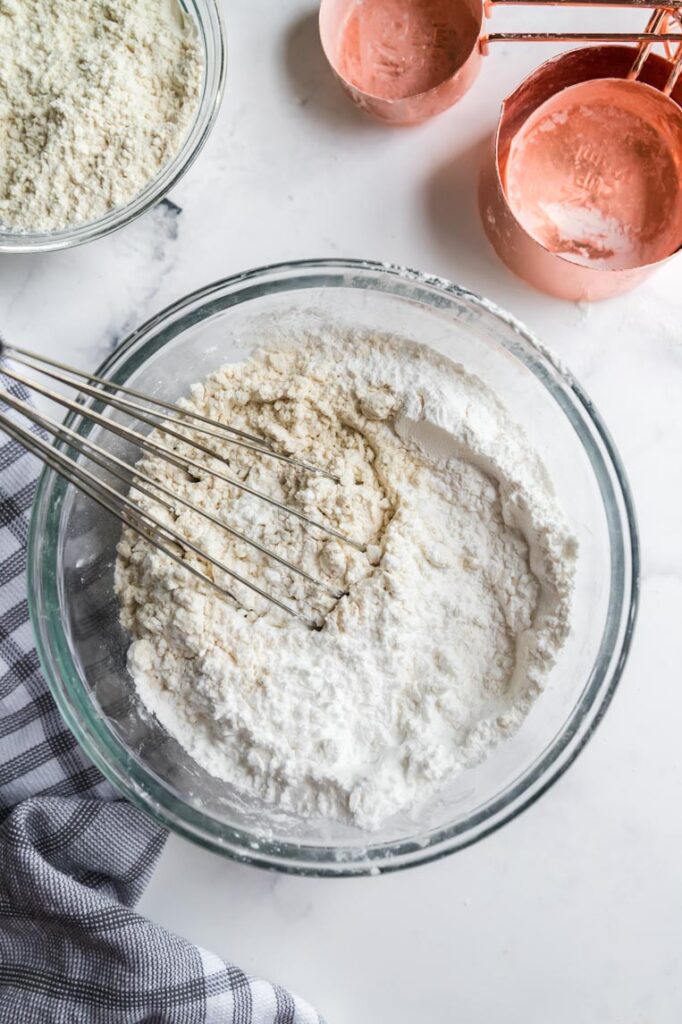
Can I use this recipe to make gluten free pancakes, bread or waffles?
I haven’t tested this version with yeasted gluten free bread recipes because I don’t believe good gluten free bread even exists. I just hate the stuff.
I do use this blend to make waffles, pancakes, pie crusts, banana bread and the best doggone birthday cake I’ve ever eaten.
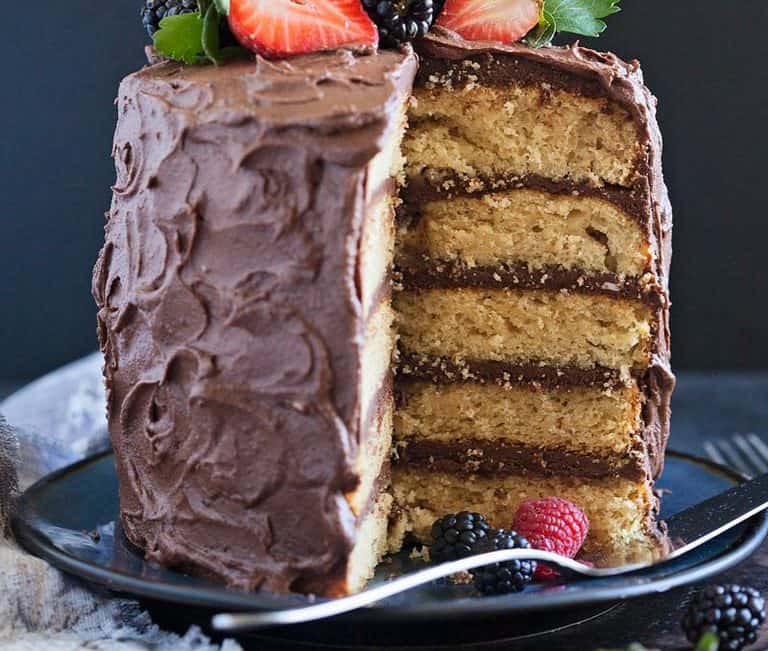
Do I need xanthan gum in this recipe?
Depending on the recipe you’re using, yes you may need it. Xanthan gum is a thickener used to help gluten free breads hold their shape. I do often add a bit of xanthan gum to my recipe if it calls for it.
If you are using a new recipe from someone other than me, check to see if they are recommending an all purpose flour blend that already has xanthan gum in it (store bought versions often have it included).
If you do need it and aren’t sure how much to add, check out this post for guidelines.
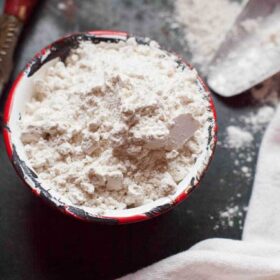
Gluten Free All Purpose Flour (that’s never gritty!)
Ingredients
- 4 cups Authentic Foods gluten free brown rice flour (560 grams)do not substitute
- 1 1/3 cups potato starch (244 grams) not potato flour
- 2/3 cup tapioca flour (84 grams) also called tapioca starch
Instructions
- Mix all ingredients together and store in an air tight container in a cool dark place. Use within a month or store in the freezer for less frequent use. Follow the instructions in your favorite recipe using this blend for the gluten free flour.
Notes
Nutrition
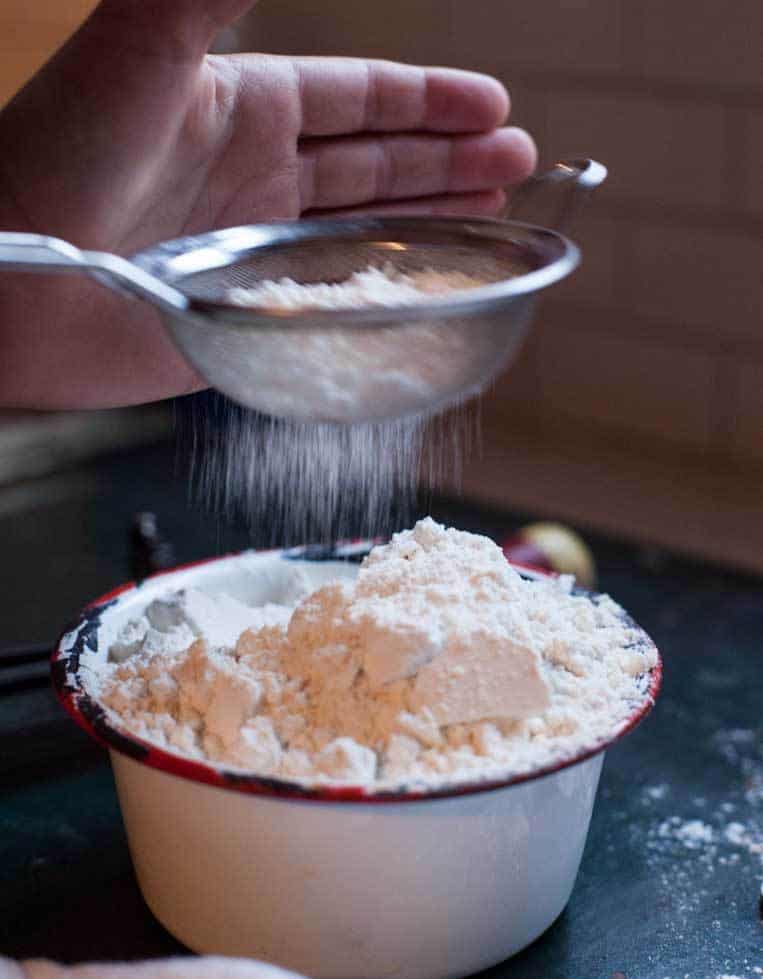
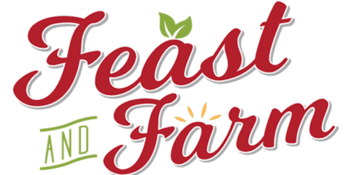
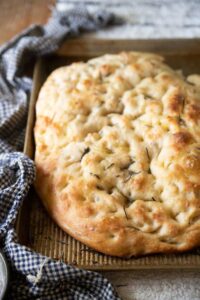
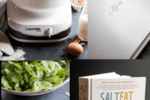
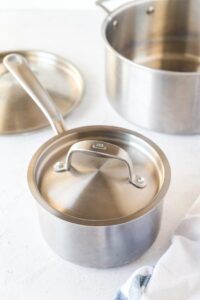
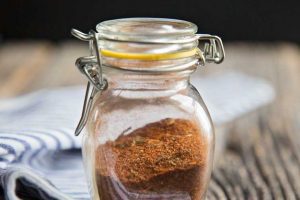


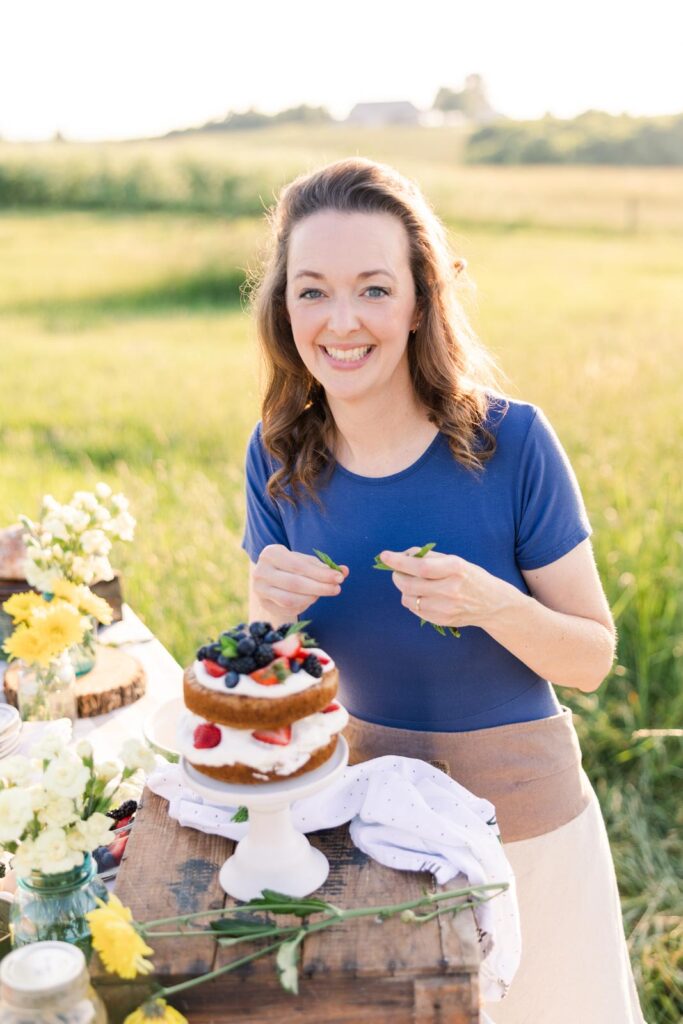
Where does the saturated fat come from? I have pancreas and gallbladder issues so the fat content is too high unfortunately.
Hi Teddianne, that’s a great question. I honestly think it’s an error in the computer software that calculates nutrition information, but it’s good to keep in mind that 3 grams is for the entire 6 cups of flour. You’d have to eat all six cups at once to get that much. –Rachel
I just wanted to say… I use this flour mixture in my zucchini bread recipe for my daughter who has celiac’s disease. It definitely kept it from being gritty, but it completely change the flavor of the bread and it wasn’t good. It also was very crumbly and almost exploded while baking. It didn’t even rise in the center of the bread. It’s really too Bad… Considering the fact that it cost so much money to buy all those different flours.
Sorry it didn’t work out for you Kerry. There are always so many factors that go into gluten free baking. I’ve had good success with this flour and as you know, moisture levels, sugar content, and other substitutions we tend to make when baking for special diets can greatly effect a final outcome. I’ve never had any issue with this flour being crumbly but the xanthan gum does have to be added separately. You could always try a recipe like this one if you want to give it another go: https://feastandfarm.com/moist-zucchini-bread/ –Rachel
In storing it, have you tried vacuum sealing containers(jars)?
Hey Kenneth, I do seal a few things in jars, but with flours, I tend to keep those in the freezer to prevent the flours from going rancid. –Rachel
Hi,
Thanks for the recipe. Is there a flour or starch that you think would work in place of the potato starch? I cannot have nightshades. Thank you!
I haven’t tested this recipe with any other flours Suzy. You know how that goes with gluten free baking–substitutions drastically change the final result. I wish I had an equivalent swap for this but I don’t. I’m sorry! –Rachel
I really would love to be able to make GF phyllo dough. What a disaster I’ve made trying to get a decent outcome!
Oh Buffy 🙁 there’s not really a way to do that. Phyllo requires that suuuuper thin dough that’s been stretched so thin you can read the paper through it. And that takes gluten unfortunately. I don’t know any additions to gluten free flour (and I have tried them ALL) that would allow for that kind of stretch. If you can tolerate wild yeast sourdough that would be your only hope for stretch in a dough that’s digestible but not truly gluten free. –Rachel
I am allergic to tapioca.
I’m sorry Karen. I don’t have a work around for that. –Rachel
@Karen, I’ve made gluten-free flour without tapioca, and my cookies came out great!
@Karen, You can use cornstarch in place of the tapioca starch flour. Try it. You will be glad you did. If it does not work out as well as you would like, try it in other gluten free recipes. All gluten free recipes do not give the same good results with the same flours.
Have you ever used this recipe to make a cake?
Yes Heidi, I have used it for lots of things! I have a great yellow gluten free cake recipe here you can check out: https://feastandfarm.com/yellow-gluten-free-cake/ It’s the same ingredients from the flour recipe but in a bit different proportions for the cake. It’s truly one of my favorites–so close to a Duncan Hines you’d never know it’s gluten free. –Rachel
What is the ratio for wheat flour vs. your gluten free blend?
Cynthia it will depend on the recipe you are making. It’s kind of hard to just 1:1 swap gluten free flour for wheat in traditional recipes without some other adjustments (like adding xanthan gum or another thickening agent). I’d say this is a 1:1 swap but you’d be on your own for figuring out how much gum to add. I’d suggest using recipes that are already written and tested as gluten free for this flour just so you can be sure it will work out (and that those extra ingredients are included in the proper amounts). –Rachel
We just tried this recipe but we used our wonder mill to make fine brown rice flour. We made pancakes for my allergy kids and the entire family wanted them. Zero grit in our pancakes! This was a dream come true! Thank you so much!
And really, I would recommend spending the money on a wonder mill if you have allergies. We bought generic brand brown rice, put it in the wonder mill and within 3 minutes had enough flour for pancakes. The brown rice flour cost us less than $2 for a pound. (it will be cheeper if we buy brown rice in bulk) We used the wonder mill on the the pastry setting to mill it super fine. Thanks for making breakfast fun again! We were getting tired of eggs.
Wonderful point Marisa! If you need gluten free flour for the long term or just want to grind any flour yourself a Wonder Mill would make perfect sense! As long as you get the grind down finely enough, you’re good to go! I’m glad you enjoyed your pancakes! –Rachel
I have been searching for a wheat flour substitute and this is the second one I have found that claims it is close to the wheat texture so I am going to try this mix as soon as I use up the all purpose flours I have bought for testing. I am actually trying to get a close wheat flour mixture to make tortillas for my Mexican meals. Especially with my red Chile. So I hope this truly works. Thank you for sharing.
Hey Margie–now I never claimed this was close to the texture of wheat flour. No gluten free flour is. I said it’s not gritty. There’s a difference. Remember this is just a base–you’ll need to add xanthan gum to give it some texture and hold if you want to make tortillas with it. It’s a lot of trial and error with gluten free flours. Very good luck to you. –Rachel